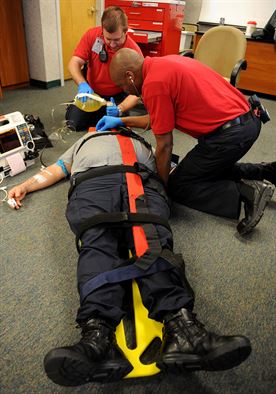You underwent extensive training to become an EMS provider. And now you’re working in an air ambulance as part of the medical flight crew. You already know that patient assessment is one of the first and most critical steps you should take before you even begin your treatment. But there’s still a chance you could make mistakes. In this post, you’ll learn some useful tips to help you make more accurate assessments.
Useful Patient Assessment Tips for Medical Flight Paramedics
Here are some simple and critical steps you should take when assessing your patients:
- Make sure the thermometer has the right temperature – Most of the equipment you use in the air ambulance may function perfectly well under any kind of temperature. But in the case of your thermometer, it’s crucial that you check to make sure it has the right temperature. If the thermometer is too cold, you may be unable to read the patient’s temperature accurately.
Ideally, you should be using your thermometer at a temperature between 60-degree and 104-degree F. But there may be times when the temperature inside your medical flight helicopter is much lower than those ideal temperatures. Try to keep the thermometer and other crucial equipment at storage temperature range before using them for patient assessment.
- Avoid using pain scale to compare patients’ pain – The pain scale can be quite subjective. So make sure you avoid using it to compare the pain your patients are suffering. Instead, the pain scale should be use as a basis to determine any changes in the patient’s pain after a certain treatment or movement.
These are two crucial points to consider when assessing your medical flight patients. There may be several other things to consider in addition to these, depending on your role and the equipment you use.


